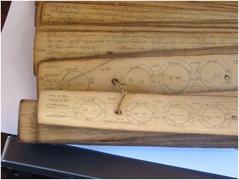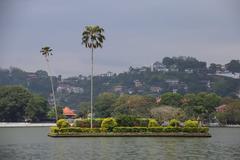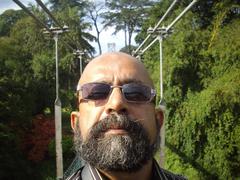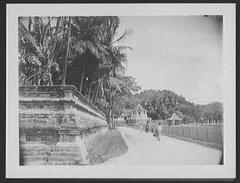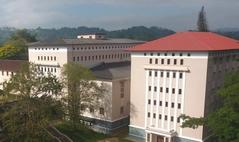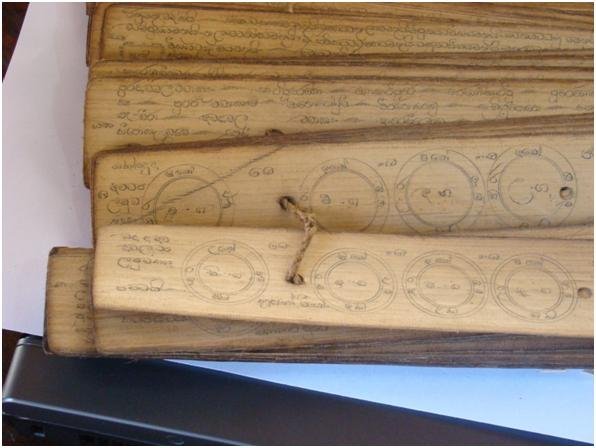
National Museum of Kandy: Visiting Hours, Tickets, and Historical Significance
Date: 15/06/2025
Introduction
The National Museum of Kandy stands as a prominent cultural and historical institution in the heart of Sri Lanka’s last royal capital, Kandy. Set within the Palle Vahala, or Lower Palace, the museum invites visitors to explore the rich legacy of the Kandyan Kingdom and its transition into the colonial era through more than 5,000 artifacts. The museum’s architecture reflects the grandeur of Kandyan artistry, while its collections and exhibitions offer deep insights into Sri Lanka’s royal, religious, and everyday life. Conveniently located near the Temple of the Sacred Tooth Relic and Kandy Lake, the museum is an essential stop for history enthusiasts, architecture admirers, and cultural travelers. This guide covers everything you need to plan your visit: from historical context and collection highlights to practical information on visiting hours, tickets, accessibility, and nearby attractions. For additional perspectives, see Trawell.in, Travejar.com, and Sri Lanka Explorers.
Table of Contents
- Historical Background and Architecture
- Practical Visitor Information
- Museum Collections and Highlights
- Nearby Attractions and Planning Your Visit
- Frequently Asked Questions (FAQ)
- Visuals and Media Suggestions
- Conclusion and Final Tips
- Reliable Sources and Further Reading
Historical Background and Architecture
Origins and Historical Context
The National Museum of Kandy occupies the Palle Vahala, constructed during the rule of King Sri Wickrama Rajasingha—the last monarch of the Kandyan Kingdom. Originally serving as the residence for the queens, the structure’s royal associations are still evident in its layout and decor. Following the British annexation of Kandy in 1815, the palace complex underwent several changes, eventually being converted into a museum in 1942. The institution was established to safeguard and showcase the region’s tangible heritage, with key contributions from the Kandy Art Association and Matale artisans (Trawell.in, Travejar.com).
Architectural Features: Kandyan Design and Colonial Influences
The Palle Vahala is a prime example of traditional Kandyan architecture:
- High-pitched tiled roofs designed for monsoon resilience.
- Intricately carved wooden pillars and beams featuring floral and geometric motifs.
- Open verandas and courtyards facilitating airflow and natural cooling.
- Thick lime-plastered walls for insulation and subtle ornamentation.
Post-1815, British influences introduced symmetrical facades and larger windows, but original features largely remain. The building’s architectural integrity is preserved through ongoing restoration efforts, ensuring that visitors experience both its historical ambiance and structural beauty (Sri Lanka Explorers).
Cultural Significance
Serving as the last royal residence before British rule, the museum embodies the resilience and identity of the Kandyan Kingdom. Its adjacency to the Temple of the Tooth Relic, a central Buddhist site, underscores the intertwined nature of spiritual and political power in Kandy’s history. The museum’s collections not only preserve objects but also narrate the broader story of Sri Lanka’s journey from monarchy to modern nationhood (Trawell.in).
Practical Visitor Information
Visiting Hours
- Open: Daily, 9:00 AM – 5:00 PM (last admission at 4:30 PM)
- Closed: Poya days (Buddhist full moon holidays) and certain national holidays
- Tip: Always check for updated hours during festival periods or public holidays (Sri Lanka Wonders).
Ticket Prices
- Foreign adults: LKR 1,000–1,500
- Locals: Lower rates apply
- Children/Students: Discounts available
- Purchase: Tickets at the entrance; cash recommended as card facilities may be limited (MakeMyTrip).
Accessibility and Travel Tips
- Location: Centrally located beside the Temple of the Tooth and Kandy Lake; 1.5 km from Kandy Railway Station.
- Transport: Tuk-tuks, taxis, and buses are readily available.
- Facilities: Ramps available at some entrances, but full wheelchair access is limited due to the historic structure. Visitors with mobility needs should request assistance at entry.
- Dress: Modest attire is recommended, especially if visiting the adjacent temple. Comfortable shoes are advisable due to uneven floors.
- Language: English and Sinhala signage; staff can assist in English.
Facilities and Amenities
- Restrooms: Available on-site.
- Information Desk: At the entrance for queries and brochures.
- Café: Not available inside, but dining options are nearby.
- Souvenirs: No dedicated shop; local vendors outside sell crafts and memorabilia.
- Security: Bag checks at entry; large bags may be stored at the cloakroom.
Guided Tours and Interpretation
- Guided tours: Can be arranged at the entrance (subject to availability).
- Interpretive signage: Available in English and Sinhala.
- Audio guides: Not currently offered.
- Printed brochures: May be available upon request (Sri Lanka Wonders).
Museum Collections and Highlights
Thematic Galleries and Signature Artifacts
The museum’s eight main halls are organized chronologically and thematically, guiding visitors from the Kandyan period to the British colonial era (Wonders of Ceylon, Wikipedia). Major highlights include:
- Royal Regalia: Ebony and ivory throne of Sri Vikrama Rajasinha, ceremonial crowns, scepters, and royal attire.
- Weaponry: Traditional swords, spears, shields, and colonial firearms.
- Jewelry & Adornments: Gold and silver ornaments worn by the Kandyan aristocracy.
- Household Items: Pottery, lacquerware, and finely crafted utensils.
- Religious Artifacts: Buddhist statues, ritual implements, and ancient manuscripts on ola (palm) leaves.
- Colonial Documents: Including the 1815 Kandyan Convention, a pivotal moment in Sri Lankan history (MakeMyTrip, History Hit).
Special Exhibitions and Events
- Temporary exhibitions and academic seminars are held periodically.
- Workshops and educational programs for students and cultural enthusiasts.
- Cultural events are common during the Kandy Esala Perahera festival (July/August).
Photography
- Photography: Permitted in most areas, but flash and videography may be restricted to protect artifacts. Always follow posted guidelines.
Nearby Attractions and Planning Your Visit
- Temple of the Sacred Tooth Relic: A UNESCO World Heritage site and the spiritual heart of Kandy.
- Kandy Lake: Ideal for a scenic stroll or boat ride.
- Royal Palace complex: Adjacent to the museum.
- Udawattakele Forest Reserve: A historic forest within walking distance.
- Royal Botanical Gardens, Peradeniya: A short drive away.
For the best experience, combine your museum visit with these sites to enjoy a comprehensive cultural day in Kandy (Sri Lanka Wonders).
Frequently Asked Questions (FAQ)
Q: What are the opening hours of the National Museum of Kandy?
A: 9:00 AM to 5:00 PM daily, with last admission at 4:30 PM. Closed on Poya days and certain holidays.
Q: How much do tickets cost?
A: Foreign adult tickets are LKR 1,000–1,500; discounts available for children and students.
Q: Is the museum accessible for visitors with disabilities?
A: Some ramps are present, but full accessibility is limited due to the historic structure. Assistance is available at the entrance.
Q: Are guided tours available?
A: Yes, subject to guide availability at the entrance.
Q: Can I take photographs inside?
A: Yes, except where flash or video is restricted.
Q: Is there a café or shop at the museum?
A: No, but nearby restaurants and vendors offer refreshments and souvenirs.
Q: How long should I plan to spend at the museum?
A: Allow 1–2 hours for a general visit; more for in-depth exploration.
Visuals and Media Suggestions
- Exterior and Interior Photos: Showcase the Kandyan architecture and gallery spaces (alt text: “Traditional Kandyan palace architecture at National Museum of Kandy”).
- Artifact Close-ups: Highlight royal regalia, weaponry, and manuscripts.
- Maps: Indicate the museum’s location relative to Kandy Lake and nearby attractions.
- Virtual Tours: Check for official online resources or tourism board offerings.
Conclusion and Final Tips
The National Museum of Kandy is not only a treasure trove of Sri Lankan art and history but also a living testament to the island’s royal past and cultural resilience. Its accessible location, rich collections, and detailed curation make it an unmissable site for travelers to Kandy. For a rewarding visit, plan ahead by checking the latest hours, dress modestly, and combine your museum experience with other nearby historical attractions. For up-to-date information and enhanced guidance, download the Audiala app and follow our social channels for the latest travel tips.
Reliable Sources and Further Reading
- Trawell.in
- Travejar.com
- Sri Lanka Explorers
- Wonders of Ceylon
- Sunshine Seeker
- Sri Lanka Wonders
- MakeMyTrip
- History Hit
- Wikipedia
- Sri Lanka Travel Pages
- Thrillophilia
- Laure Wanders
